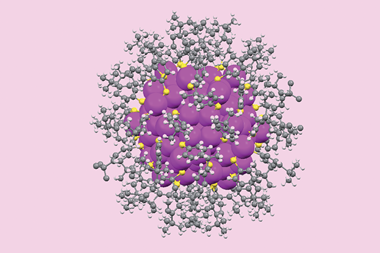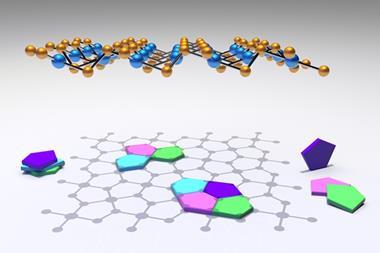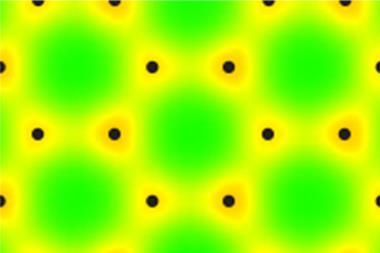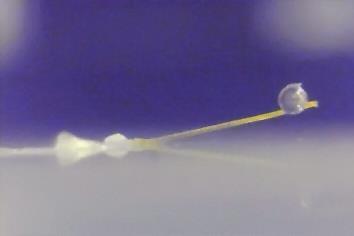![]()
DNA has been given an overhaul with the addition of chains of gold ions that turn this molecule of life into a semiconductor. The work builds on the growing field of DNA-based nanomaterials, which could provide low-cost nanoscale device fabrication and the generation of self-assembling electronic circuits.
Incorporating metal ions into DNA is nothing new, but in previous approaches metal ions had always remained isolated from each other thereby preventing significant changes in the structures’ electronic properties. What’s more, some approaches caused the self-assembling quality of DNA to be lost, undermining the main reason for using DNA.
Now, Andrew Houlton and colleagues at Newcastle University, UK, have developed a way to introduce linked-up gold ions into DNA via a coordination polymer. ‘Our coordination polymer is a type of gold thiolate compound and, uniquely, this example can be switched to an electrically conducting form by oxidation,’ explains Houlton. ‘This allows semiconducting properties to emerge as the electronic states can delocalise along the chain.’
The team’s approach used a sulfur-containing analogue of a natural nucleoside – a DNA building block. Thiopurine nucleoside analogues are commonly used to treat a range of illnesses and are readily incorporated into DNA. Houlton and colleagues therefore wondered if a thiopurine might do the job to link up gold ions when inserted into DNA.
Experiments revealed that 6-thioguanosine reacted with gold ions to spontaneously assemble luminescent helical chains that are structurally analogous to DNA. Since sulfur has a high affinity for gold ions, the thiol group avoided competing reactions with metal-ion binding sites on the natural nucleosides in DNA. This enabled simple integration of the gold thiolate polymer into double stranded DNA structures.
Uniquely, for such a material, the team discovered that this gold thiolate can be transformed into a wire-like conducting form by oxidative doping. ‘While the formation of gold thiolate coordination polymers is established, none have been derived from nucleosides nor shown to be electrically conducting,’ says Houlton. Variable temperature electrical measurements indicated a thermally assisted tunnelling or hopping mechanism akin to organic polymers for the conduction process.
‘It is exciting to see the successful implementation of a semiconducting inorganic component into a larger DNA assembly,’ comments Jens Müller, who investigates metallo-DNA materials at the University of Münster, Germany. ‘It suggests that metal-doped DNA-based materials may become useful for the development of electronic devices.’ However, he cautions that conclusive experimental proof of electrical conductivity of the overall system remains to be seen. ‘In the present paper, this was proven for the semiconducting inorganic component outside the DNA context, but not yet for the DNA-based material.’
References
L Al-Mahamad et al, Nat. Commun, 2017, DOI: 10.1038/s41467-017-00852-6


![X ray single crystal structure of Cucurbit[7]uril binding an amphetamine](https://d2cbg94ubxgsnp.cloudfront.net/Pictures/380x253/3/4/8/133348_X-ray-single-crystal-structure-of-2-CB-7-.jpg)









No comments yet